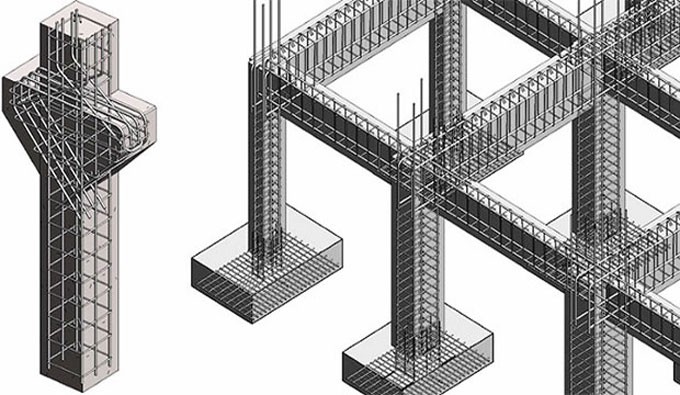
Designing and detailing of Reinforced Concrete Structures
What is Reinforced Concrete
Reinforced concrete (RC) is a versatile composite and one of the most widely used materials in modern construction. Concrete is a relatively brittle material that is strong under compression but less so in tension. Plain, unreinforced concrete is unsuitable for many structures as it is relatively poor at withstanding stresses induced by vibrations, wind loading, and so on.
Benefits in detailing in Concrete Structures
Detailing involves the communication of the engineer?s design to the contractors who build the structure. Good detailing ensures that reinforcement and concrete interact efficiently to provide satisfactory behaviour throughout complete range of loading.
There are many benefits if we apply good detailing to reinforced Concrete structures, some of them are mentioned below:
1. Detailing is very important not only for the proper execution of the structures but for the safety of the structures.
2. A design engineer's responsibility should include assuring the structural safety of the design, details, checking shop drawing.
3. Detailing is necessary not only for the steel structures as well as reinforced concrete structures as it is the translation of all the mathematical expression's and equation's results.
Methods used in Designing Reinforced Concrete Structures
Design of reinforced concrete structures started in the beginning of last century following purely empirical approach. Thereafter came the so called rigorous elastic theory where the levels of stresses in concrete and steel are limited so that stress-deformations are taken to be linear. However, the limit state method, though semi-empirical approach, has been found to be the best for the design of reinforced concrete structures.
Working Stress or Elastic Method
Working stress or Elastic Method is a method used for the reinforced concrete design where concrete is assumed as elastic, steel and concrete act together elastically where the relationship between loads and stresses is linear. This was the traditional method of design not only for reinforced concrete, but also for structural steel and timber design.